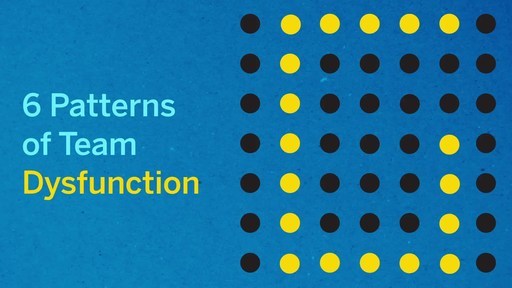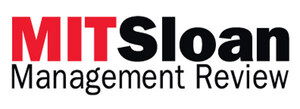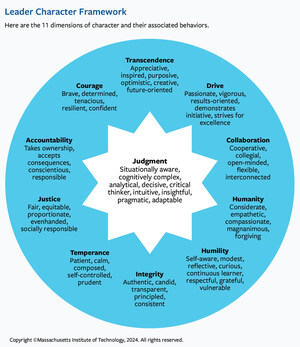New MIT Sloan Management Review Research Article Reveals Six Archetypes of Collaborate Dysfunction in Teams and Offers Research-Backed Solutions to Enhance Team Performance and Employee Engagement
Collaborative dysfunction can lead to poor team performance, create obstacles to innovation, and erode employee engagement. Researchers Rob Cross and Inga Carboni offer guidance on diagnosing the issues, identifying the causes and implementing solutions.
CAMBRIDGE, Mass., Dec. 8, 2020 /PRNewswire/ -- In a new article, "When Collaboration Fails, and How to Fix It" released today by MIT Sloan Management Review (MIT SMR), researchers Rob Cross and Inga Carboni identify six archetypes of collaborative dysfunction that cripple teams. The authors highlight a number of the drivers that create these problems and suggest remedies for addressing them.
The need for collaboration is more critical than ever, given the rising use of Agile methodologies, the de-layering of hierarchies, the widespread adoption of digital tools and technologies, and the dramatic transition to remote work in response to COVID-19. Yet organizations are failing to meet that need, and the consequences are serious: Collaborative dysfunction hinders group and employee performance and productivity, creates obstacles to innovation, impedes both idea generation and implementation, and erodes employee engagement—contributing to stress, overload, and burnout. Cross and Carboni's research sheds light on why groups are struggling. "Leaders are unleashing their teams without establishing the conditions needed to support collaboration," the authors write. "When collaborative efforts break down, leaders are relying on conventional interventions that may not address the true nature of their problems."
Cross and Carboni's insight on collaboration is backed by deep research. The authors draw on more than a decade's worth of organizational network analysis (ONA) studies conducted across industries and geographies to profile patterns of collaboration undermining team and unit success within organizations ranging from 2,200 to 45,000 employees. They also have conducted in-depth interviews with 100 leaders of collaborative efforts within 20 corporate members of Connected Commons, a global research consortium.
In the article, the researchers identify six archetypes of collaborative dysfunction that undermine productivity and morale within teams:
Dysfunction #1: Hub-and-Spoke Networks: Excessive reliance on formal and informal leaders slows decision-making, blocks innovation, alienates team members, and overloads leaders.
Drivers include: Hierarchical or overly controlling leadership behaviors and a fear-driven culture that promotes approval seeking and validation. Solutions include: Boosting engagement by coaching people to assume an appropriate level of authority and integrating expertise through joint work, shifting work away from hubs.
Dysfunction #2: Disenfranchised Nodes: Marginalized team members lack access to resources and struggle to contribute, negatively affecting group performance and the disenfranchised members' engagement and retention. Drivers include: Leaders who elevate some group members above others and disconnection by virtue of status or physical location. Solutions include: Embedding inclusion as a group value and using technology to overcome geographic disconnection.
Dysfunction #3: Misaligned Nodes: Factions that don't relate to one another slow down work, erode cohesion, and undermine project success. Drivers include: Clusters of like-minded teammates and distrust or competition among the team members Solutions include: Cocreating shared goals and priorities and reinforcing them with metrics and accountability and conducting exercises that enable members to connect outside the group and reset relationships.
Dysfunction #4: Overwhelmed Nodes: Team members cannot keep up with the collaborative demands placed upon them, leading to insufficient time for work, inefficient decision-making, excessive compromise, lower engagement, and ultimately burnout. Drivers include: Ineffective meeting and communication norms and fear of making independent decisions or of being left out. Solutions include: Redesigning the group's structure and work and determining the impact-to-effort ratio of new activities and empowering team members to say no.
Dysfunction #5: Isolated Networks: Impermeable group borders block stakeholder input and external resources/expertise, resulting in flawed decisions, innovation failures, and a lack of integration with the organization. Drivers include: Hyperfocus on optimizing the outcome based on the group's expertise or values rather than the end need and an echo chamber created by amplified input from a select few stakeholders. Solutions include: Focusing on outcomes from the stakeholder perspective and providing the group with greater visibility into broader organizational goals and initiatives.
Dysfunction #6: Priority Overload: External stakeholder demands cause group members to lose sight of their mission and highest priorities, resulting in work overload that hurts the quality of execution, delays delivery, and creates employee burnout. Drivers include: Overemphasis on agility and personal and cultural values that lead to overcommitment. Solutions include: Mapping activities with external stakeholders and being transparent about workload and competing demands, and resetting group priorities collectively.
These six dysfunctional archetypes undermined performance in 88% of the 66 organizations the researchers studied. Yet, Cross and Carboni assert that if leaders and managers understand the different models of dysfunction, they can diagnose issues, identify the causes and solutions, and create a truly collaborative workplace.
To read the full article, please visit: MIT SMR.
About the authors:
Rob Cross (@robcrossnetwork) is the Edward A. Madden Professor of Global Leadership at Babson College and chief research scientist for global research consortium Connected Commons. Inga Carboni is an associate professor of organizational behavior at the Raymond A. Mason School of Business at the College of William & Mary.
About MIT Sloan Management Review
At MIT Sloan Management Review (MIT SMR) we share with our readers an excitement and curiosity about how the practice of management is transforming in the digital age. Our expert contributors help leaders explore the trends that are shaping how organizations operate, compete, and create value in a technology-fueled world. We deliver the kind of evidence-based analysis and practical insight that will inspire leaders to do great work.
Contact
Emily Lavelle
Emily Lavelle Communications
+1-212-390-1328
[email protected]
SOURCE MIT Sloan Management Review

Related Links
WANT YOUR COMPANY'S NEWS FEATURED ON PRNEWSWIRE.COM?
Newsrooms &
Influencers
Digital Media
Outlets
Journalists
Opted In






Share this article